Snapdragon 888: Everything you need to know about Qualcomm's 2021 flagship SoC
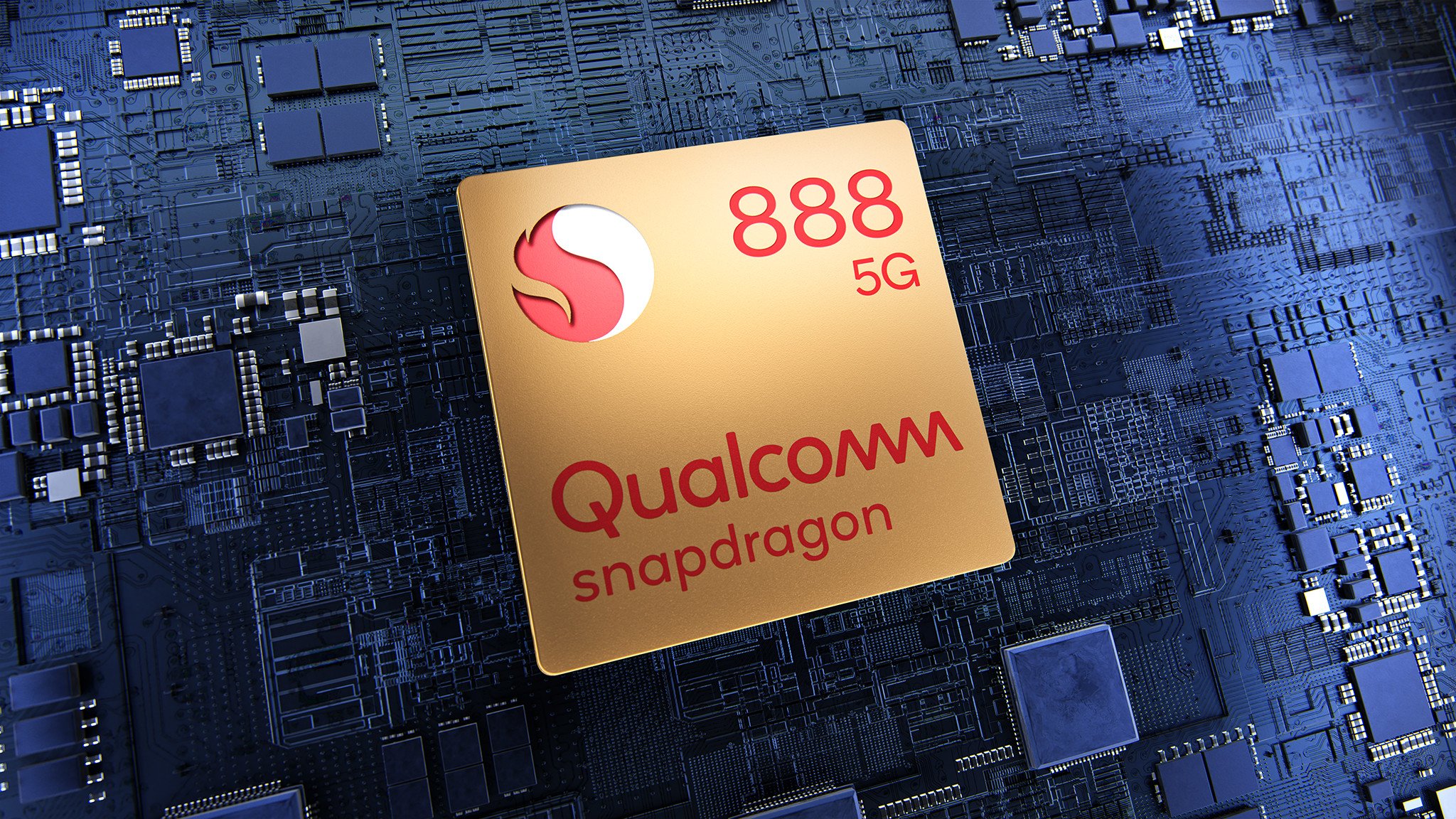
Qualcomm has unveiled the Snapdragon 888, and we now have a detailed breakdown of the chipset's inner workings. The Snapdragon 888 is an important chipset for Qualcomm — with 5G set to go mainstream, Qualcomm is positioning its latest chipset as the go-to option for manufacturers rolling out flagship phones in 2021. In short, the Snapdragon 888 will power the best Android phones in 2021.
The Snapdragon 888 also offers a massive increase in performance across the board. Qualcomm is touting a 25% uptick in CPU performance, a 35% uptick in GPU performance, and sizeable gains with the ISP, AI engine, and 5G connectivity. Simply put, this is the biggest year-on-year update we've seen for the Snapdragon 800 series for a long time.
So let's take a look at what the Snapdragon 888 has to offer and why it makes 2021 flagships like the Galaxy S21 series that much more enticing.
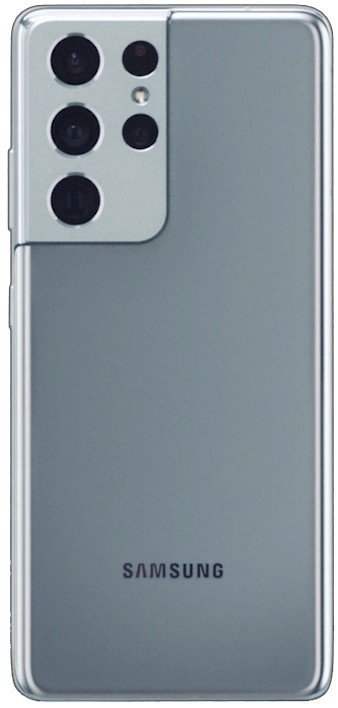
Taking things to a whole new level
The Galaxy S21 Ultra delivers all the upgrades you've been waiting for. The phone has a QHD+ AMOLED panel with a dynamic refresh rate that scales from 11Hz to 120Hz, and you get the Snapdragon 888 with global 5G connectivity. Combine that with a stellar 108MP camera at the back, and 10x zoom lenses, Wi-Fi 6W, and a 5000mAh battery, and you have a fantastic flagship for 2021.
Snapdragon 888 is powering these phones in 2021
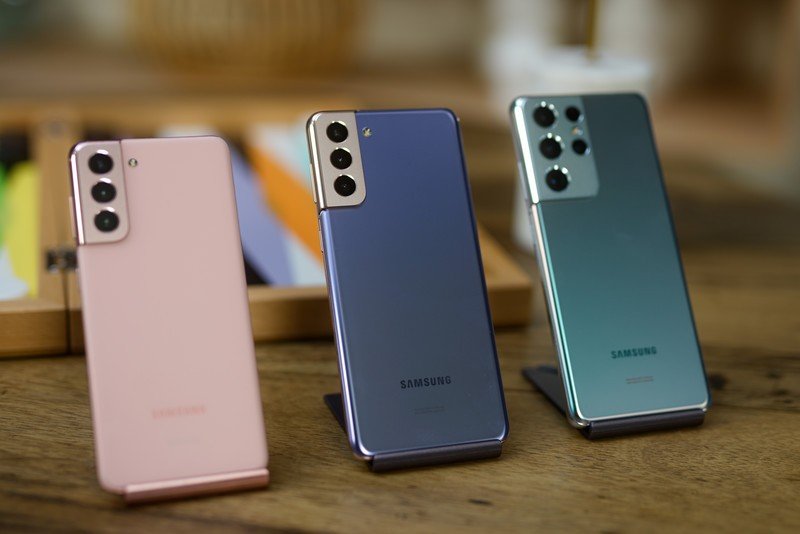
The first set of phones powered by the Snapdragon 888 have already been launched. Xiaomi was the first to roll out a device featuring the new chipset, the Mi 11. The phone is now on sale in China and should make its way to global markets in the coming months.
Samsung is one of the first to launch phones with the latest Qualcomm silicon, which's no different this year. The Galaxy S21 series made its debut on January 14, and all three models — the Galaxy S21, S21+, and S21 Ultra — are powered by the Snapdragon 888 in North America and select global markets.
We know for a fact that the OnePlus 9 Pro will feature the Snapdragon 888. We can look forward to new devices from OPPO, Vivo, Realme, Nubia, ASUS, Motorola, and others in the coming months. These 14 Android manufacturers have committed to releasing phones powered by the Snapdragon 888:
- ASUS
- Black Shark
- Lenovo
- LG
- MEIZU
- Motorola
- Nubia
- Realme
- OnePlus
- OPPO
- Sharp
- Vivo
- Xiaomi
- ZTE
Snapdragon 888 delivers massive performance gains
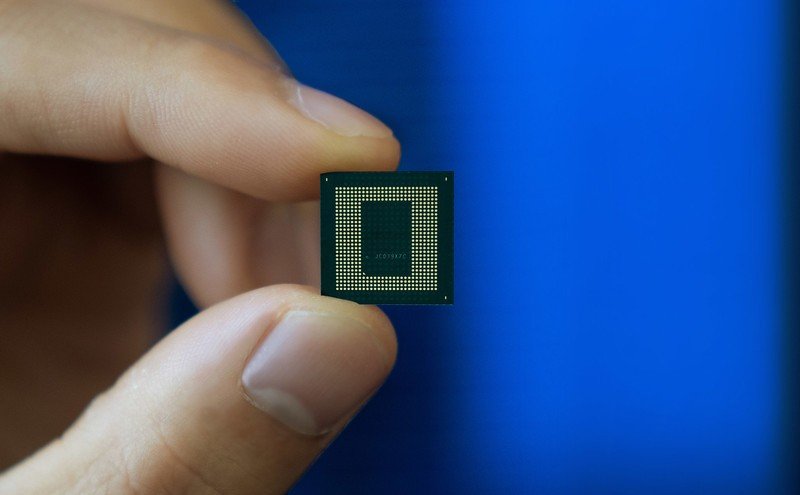
The Snapdragon 888 uses new Cortex cores to deliver noticeable gains in performance over the Snapdragon 865. Like the Snapdragon 865, the Snapdragon 888 uses eight cores in a 1 + 3 + 4 configuration. But what's different this time is that Qualcomm is using three distinct cores, with the "prime" core being the Cortex X1 that's clocked up to 2.84GHz. Then you'll find three Cortex A78 cores that go up to 2.4GHz, and four energy-efficient Cortex A55 cores at 1.8GHz.
Be an expert in 5 minutes
Get the latest news from Android Central, your trusted companion in the world of Android
The Cortex X1 core delivers the sort of performance we just haven't seen on Android.
The Cortex X1 is an absolute beast — think of it as a turbocharged A78. Arm basically unshackled the A78 core from the thermal and efficiency limits, and in doing so, created a design that can hold its own against the likes of Apple's A14 Bionic. The X1 is faster than anything we've seen on Android yet, and that should be exciting news for anyone looking to upgrade to a new phone this year.
Qualcomm is the first chip vendor to use a design with the X1 core, and the Snapdragon 888 delivers a 25% increase in performance over the Snapdragon 865 — all thanks to the X1 core. The Snapdragon 888 is also built on a 5nm node, allowing the chipset to be that much more efficient. The cores are still labeled in the Kryo series and are now dubbed the Kryo 680.
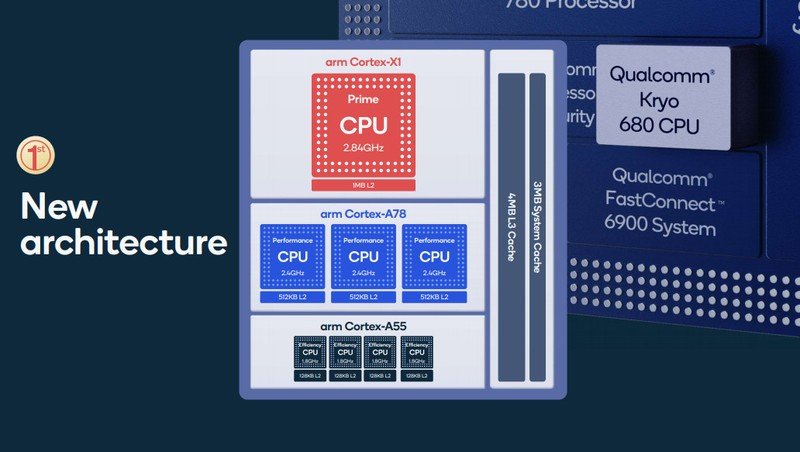
The Snapdragon 888 has exciting wins in other areas. The chipset can handle QHD+ resolutions up to 144Hz and 4K at 60Hz, so look forward to flagship phones with QHD+ panels at 144Hz. When it comes to HDR content, the Snapdragon 888 has HDR10+, HDR10, HLG, and Dolby Vision. In terms of memory, manufacturers can add up to 16GB LPDDR5 RAM modules at 3200MHz.
As for Wi-Fi connectivity, the Snapdragon 888 has the FastConnect 6900 system, delivering Wi-Fi 6 throughput of up to 3.6Gbps as well as 6GHz Wi-Fi 6E connectivity. You'll also find Bluetooth 5.2, Qualcomm's AptX suite of high-fidelity audio codecs, NFC, GPS, Glonass, BeiDou, Galileo, QZSS, NavIC, and SBAS.
Snapdragon 888 is the 'biggest upgrade' in gaming

With the Snapdragon 888, Qualcomm is touting a 35% increase in gaming performance over the previous generation. The Adreno 660 GPU offers 10-bit HDR gaming at up to 144fps, and it is up to 20% more efficient than the Adreno 650. Devices like the OnePlus 8T — powered by the Adreno 650 — deliver incredible performance, and it is interesting to see how the Adreno 660 builds on that.
The Adreno 660 is 35% faster and offers better-sustained peak performance.
The best part about the Adreno 660 is that Qualcomm is now claiming better-sustained peak performance, so the GPU should not throttle when you're in the middle of an extended gaming session. Qualcomm is also touting a new Game Quick Touch feature in its Snapdragon Elite Gaming suite, which reduces the touch latency by up to 20%, leading to much better response times.
Finally, Qualcomm is introducing a feature that is now a mainstay on PCs and the latest consoles: variable-rate shading (VRS). The rendering technique is designed to reduce GPU workloads by giving game developers better control over how a frame is rendered. For instance, if an object is out of focus or in the background, that frame can now be rendered in a lower fidelity, with the bulk of the GPU resources going toward rendering the foreground objects.
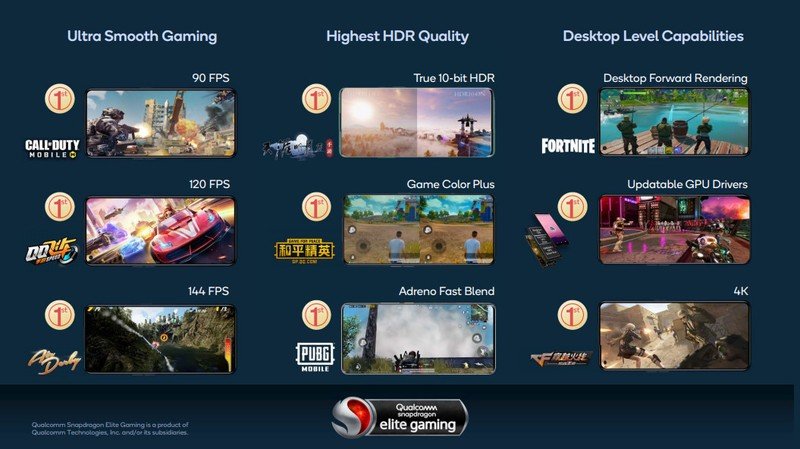
Variable-rate shading makes a huge difference for visual fidelity in games, and it is exciting to see the feature make its way to the mobile segment.
Snapdragon 888 takes the camera to a whole new level
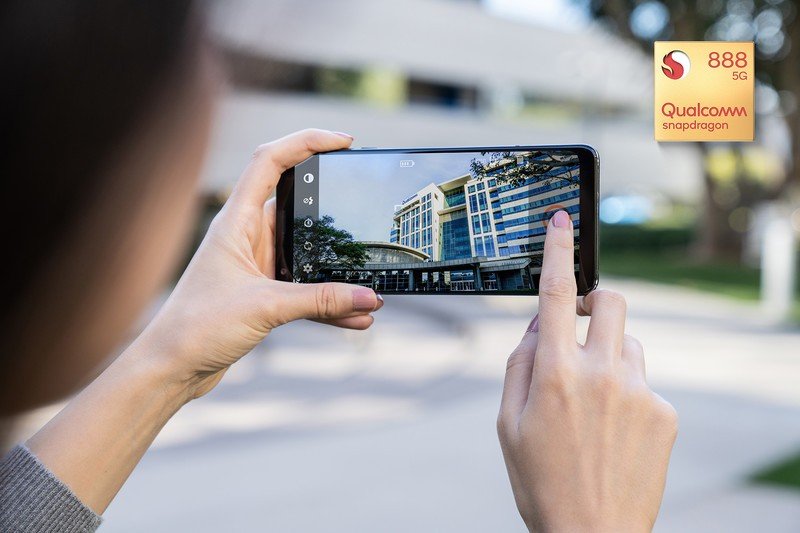
If you're looking to buy a flagship phone, you want a camera that can rival a DSLR. Qualcomm is looking to make that a reality by rolling out considerable upgrades to its image signal processor (ISP). The Spectra 580 has three 14-bit ISPs that can take in up to 2.7 Gigapixels of light a second, a full 35% increase over the previous generation.
Get ready to see phones with much better cameras in 2021.
The ISP can shoot up to 120 photos in burst mode in one second, or three 4K HDR video streams simultaneously. It can also crunch information from three distinct 28MP cameras at once and supports up to 200MP imaging sensors. Qualcomm is essentially offering the hardware to deliver outstanding shots, so it will be interesting to see how phone manufacturers leverage the platform to improve their cameras in 2021.
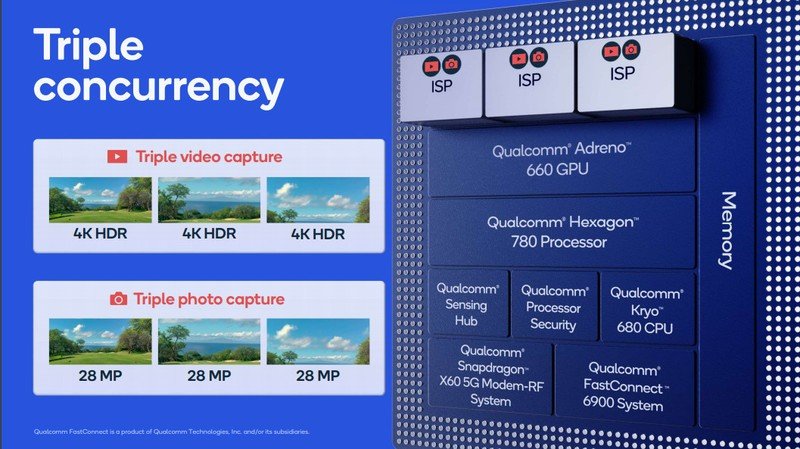
Another standout feature is the ability to record 4K video at 120fps, a first for Qualcomm. There's the ability to shoot 8K at up to 30fps as well, which is unchanged from last year. Qualcomm is also rolling out the ability to shoot 10-bit HDR images in HEIF, with the format retaining the visual quality while reducing the file size.
Finally, Qualcomm is leveraging its association with Truepic to curb fake photos and videos, with the chipset the first to be compliant with the Content Authenticity Initiative standard.
Snapdragon 888 has an integrated 5G modem with carrier aggregation
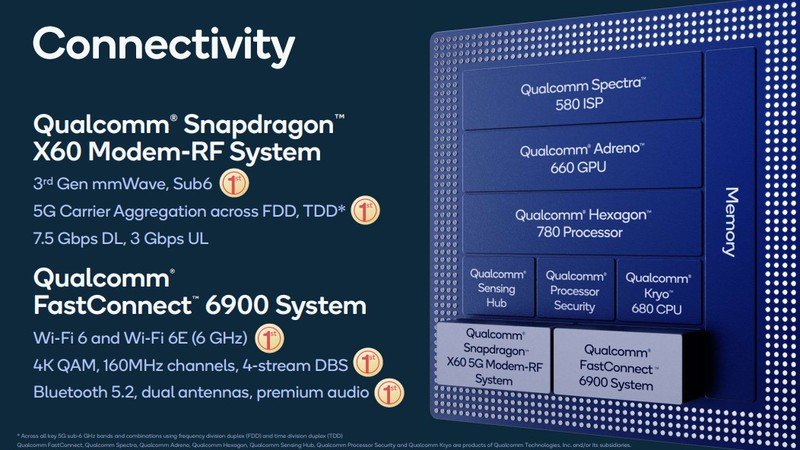
The Snapdragon 865 lacked a cellular modem and relied on a standalone X55 modem for 5G and 4G connectivity. That's changing with the Snapdragon 888, with Qualcomm integrating the 5G modem within the SoC. That should lead to much better efficiency as there's a single SoC on the phone.
With carrier aggregation and dynamic spectrum sharing, the X60 is the best 5G modem available.
The chipset features Qualcomm's third-gen X60 5G modem, and it has global Sub-6 and mmWave connectivity. The standout feature here is carrier aggregation on FDD and TDD bands and dynamic spectrum sharing — a first for the industry. This solves a lot of the issues that carriers face in terms of 5G infrastructure.
For instance, T-Mobile has focused on Sub-6 bands for its 5G rollout, but the carrier also holds a lot of mid-band and high-band spectrum, and it now has the ability to leverage those bands to deliver better speeds in dense areas.
The X60 delivers up to 7.5Gbps download speeds and 3Gbps uploads, and as was the case with 4G modems, it's unlikely you will ever see these kinds of speeds in real-world use. But what you should care about is carrier aggregation and global Sub-6 and mmWave connectivity.
Snapdragon 888 has a class-leading AI engine
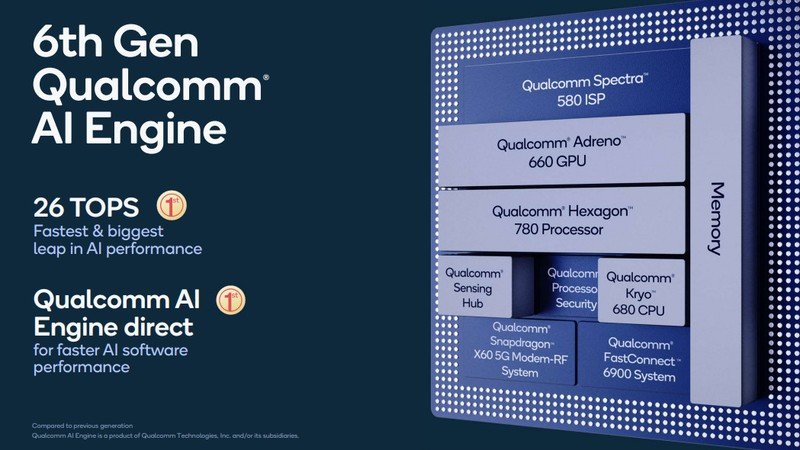
AI is playing a bigger role in smartphones these days, and the Snapdragon 888 comes with Qualcomm's sixth-gen AI engine. The new Hexagon 780 delivers massive gains for AI workloads, with Qualcomm now offering AI-based autofocus and auto-exposure for the camera.
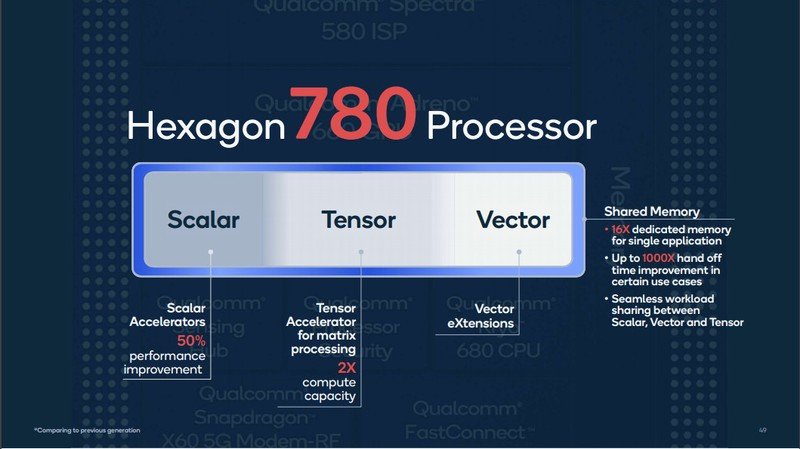
The engine is 2x faster at compute tasks and is much more efficient, with Qualcomm touting a 3x improvement in performance per watt figures. The Snapdragon 888 now goes up to 26 trillion operations per second (TOPS), nearly double that of the Snapdragon 865's 15TOPS.

Welcome to the next level
The Galaxy S21 Ultra is the obvious choice if you're looking to upgrade to a flagship in 2021. It has the latest Qualcomm silicon and 5G connectivity, a sublime AMOLED screen with a dynamic refresh rate, outstanding cameras, a battery that lasts more than a day, and all the extras. You can also use Samsung's S Pen stylus here, and you get IP68 along with 15W wireless charging.

Harish Jonnalagadda is Android Central's Senior Editor overseeing mobile coverage. In his current role, he leads the site's coverage of Chinese phone brands, networking products, and AV gear. He has been testing phones for over a decade, and has extensive experience in mobile hardware and the global semiconductor industry. Contact him on Twitter at @chunkynerd.
